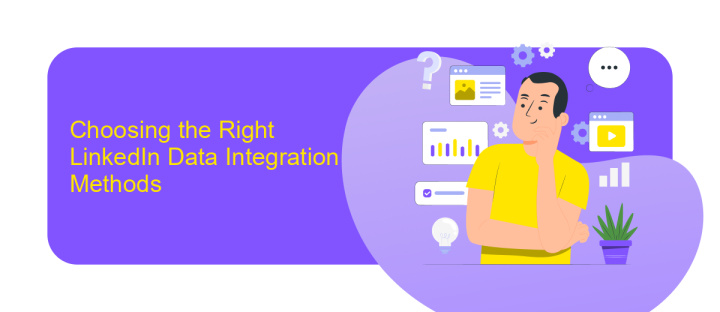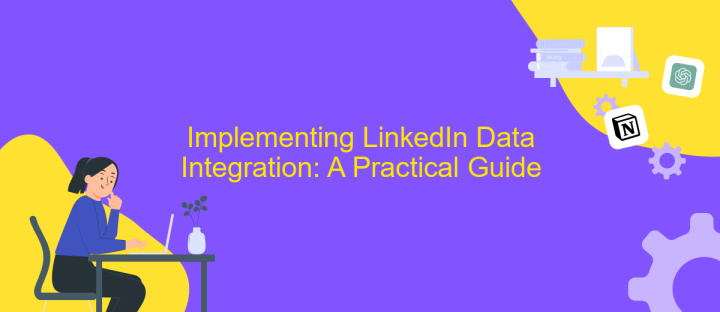LinkedIn Data Integration
In today's data-driven world, seamless integration of LinkedIn data into your business processes is crucial for gaining valuable insights and enhancing decision-making. By effectively leveraging LinkedIn's rich datasets, companies can unlock new opportunities for growth, improve customer engagement, and optimize their marketing strategies. This article explores the best practices and tools for successful LinkedIn data integration, empowering businesses to harness the full potential of their professional networks.
Understanding LinkedIn Data and its Potential
LinkedIn, a leading professional networking platform, hosts a wealth of data that can be leveraged for various purposes. This data encompasses profiles, connections, endorsements, and interactions, providing insights into professional trends and behaviors. Understanding LinkedIn data involves recognizing its structured nature, where each profile acts as a digital resume, and each connection reflects a professional relationship. This data is valuable for businesses, recruiters, and researchers aiming to enhance their strategies and understand industry dynamics.
- Profiles: Detailed resumes including skills, experiences, and education.
- Connections: Networks that reveal how professionals are linked.
- Endorsements: Peer validations of skills that add credibility.
- Interactions: Engagement metrics that highlight interests and trends.
By integrating LinkedIn data, organizations can gain a competitive edge. For recruiters, it streamlines the hiring process by identifying qualified candidates. Businesses can analyze market trends and competitor landscapes. Researchers can study workforce dynamics and industry shifts. The potential of LinkedIn data lies in its ability to provide a comprehensive view of the professional world, enabling informed decision-making and strategic planning.
Choosing the Right LinkedIn Data Integration Methods

When selecting the appropriate LinkedIn data integration methods, it's crucial to consider the specific needs of your business. Start by assessing the volume and type of data you need to integrate. If your requirements are straightforward and involve basic data transfer, utilizing LinkedIn's native APIs might suffice. However, for more complex integrations involving multiple data sources and real-time updates, you may need a more robust solution that can handle these demands efficiently.
Services like ApiX-Drive can be invaluable for businesses seeking seamless LinkedIn data integration. ApiX-Drive simplifies the process by offering a user-friendly platform that connects LinkedIn with various applications without requiring extensive coding knowledge. It allows you to automate workflows, ensuring data consistency and accuracy across platforms. By choosing the right integration method, you can enhance your business operations, improve data-driven decision-making, and ultimately drive growth. Evaluate your options carefully and consider leveraging tools like ApiX-Drive to streamline your LinkedIn data integration process.
Implementing LinkedIn Data Integration: A Practical Guide

Integrating LinkedIn data into your business systems can enhance your analytics and decision-making processes. To begin, it's essential to understand the types of data available and the specific needs of your organization. By leveraging LinkedIn's API, you can access a wealth of information related to professional profiles, company insights, and industry trends.
- Start by registering your application with LinkedIn to obtain necessary API credentials.
- Define the data points you need, such as profile information, connections, or company updates.
- Use LinkedIn's API documentation to understand the endpoints and data structures.
- Develop a data extraction plan, ensuring compliance with LinkedIn's data use policies.
- Implement data transformation processes to align LinkedIn data with your existing systems.
- Set up regular data synchronization to keep your datasets up-to-date.
- Monitor and optimize your integration for performance and accuracy.
By following these steps, you can seamlessly integrate LinkedIn data into your existing systems, providing valuable insights and enhancing your organization's strategic capabilities. Remember to continually review and refine your integration process to adapt to any changes in LinkedIn's API or your business needs.
Leveraging LinkedIn Data for Business Insights and Growth

LinkedIn data provides a wealth of opportunities for businesses aiming to enhance their strategic decision-making processes. By analyzing user profiles, companies can gain valuable insights into industry trends, demographic shifts, and competitive landscapes. This data-driven approach allows businesses to tailor their strategies to meet evolving market demands and identify new growth opportunities.
Furthermore, LinkedIn data can be leveraged to improve customer engagement and retention. By understanding the professional interests and career trajectories of their target audience, businesses can create personalized marketing campaigns that resonate more effectively with potential clients. This not only enhances brand loyalty but also drives higher conversion rates.
- Identify key industry influencers and thought leaders.
- Track competitor activities and market positioning.
- Analyze workforce trends and talent acquisition strategies.
- Enhance targeted advertising and content marketing efforts.
Incorporating LinkedIn data into business strategies offers a competitive edge by providing actionable insights that drive growth. As the business landscape becomes increasingly data-centric, utilizing LinkedIn's vast network and data resources is essential for companies seeking to thrive in today's dynamic market environment.


Best Practices and Future Trends in LinkedIn Data Integration
When integrating LinkedIn data, it is crucial to follow best practices to ensure seamless and efficient data management. Start by clearly defining your objectives and understanding the specific data points you need. Prioritize data privacy and compliance with LinkedIn's terms of service to maintain integrity and trust. Implement robust security measures to protect sensitive information. Utilize tools like ApiX-Drive to automate data integration processes, reducing manual effort and minimizing errors. Regularly monitor and audit your data integration workflows to ensure accuracy and efficiency.
Looking ahead, the future of LinkedIn data integration is likely to be shaped by advancements in artificial intelligence and machine learning. These technologies can enhance data analysis, providing deeper insights and more personalized user experiences. Additionally, the growing emphasis on data-driven decision-making will drive the demand for real-time data integration solutions. As businesses continue to seek competitive advantages, leveraging cutting-edge tools and staying updated on emerging trends will be essential for optimizing LinkedIn data integration strategies.
FAQ
What is LinkedIn Data Integration?
How can I automate LinkedIn data integration processes?
What are the benefits of integrating LinkedIn data with a CRM?
Is it possible to integrate LinkedIn with email marketing tools?
What challenges might I face with LinkedIn data integration?
Routine tasks take a lot of time from employees? Do they burn out, do not have enough working day for the main duties and important things? Do you understand that the only way out of this situation in modern realities is automation? Try Apix-Drive for free and make sure that the online connector in 5 minutes of setting up integration will remove a significant part of the routine from your life and free up time for you and your employees.

